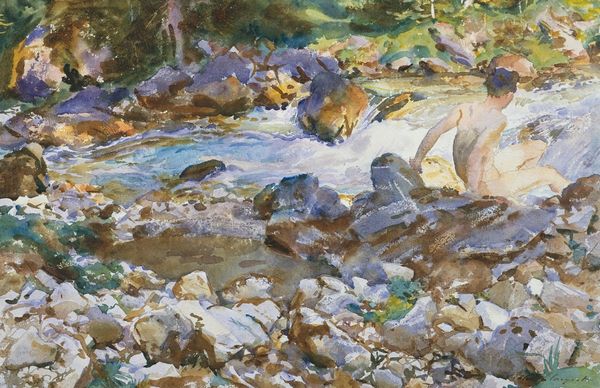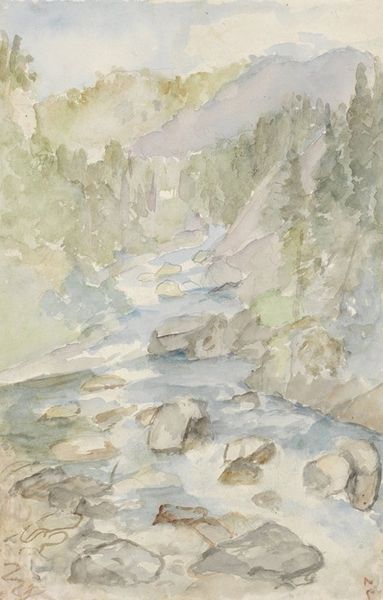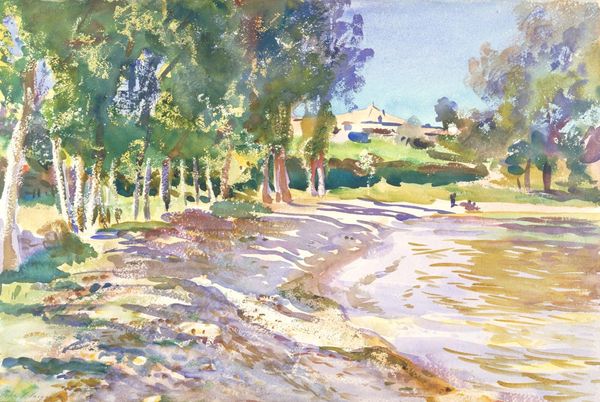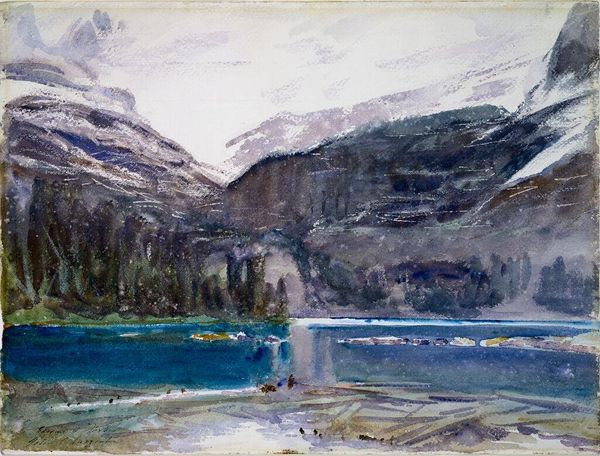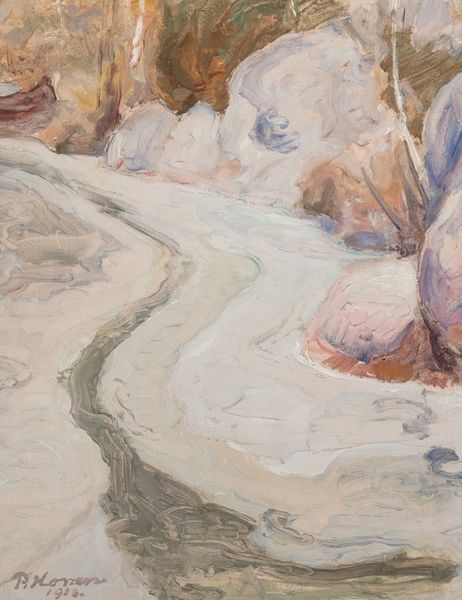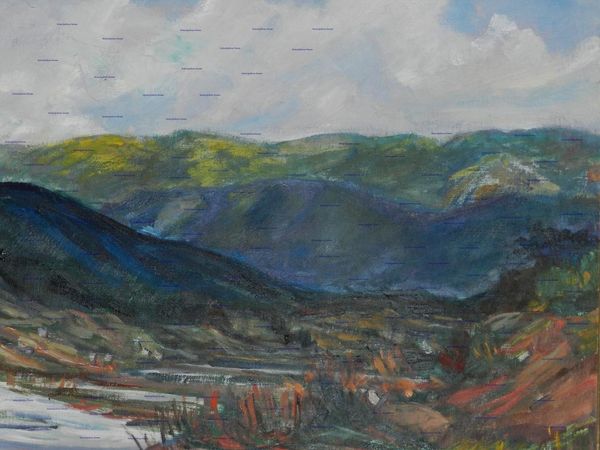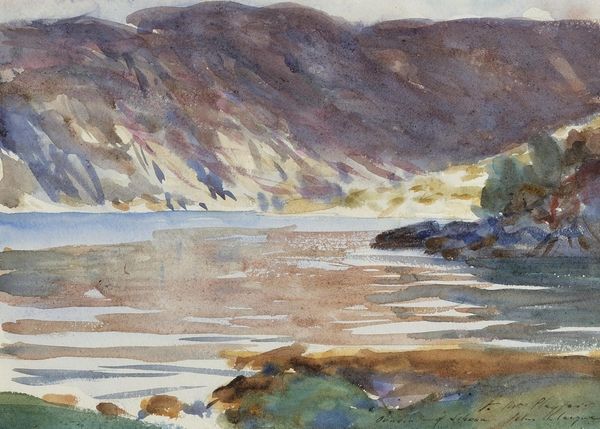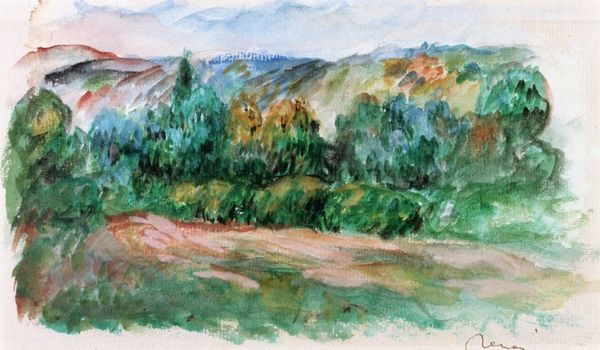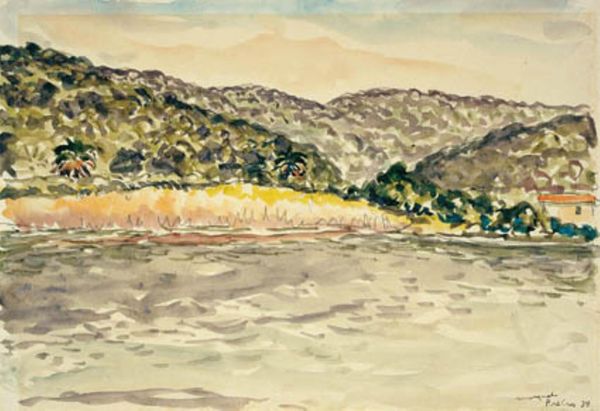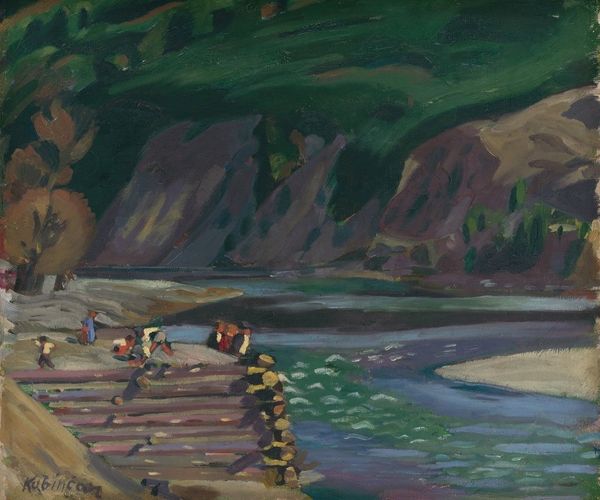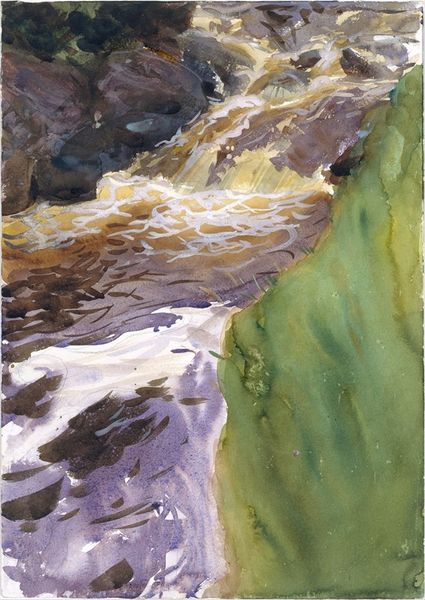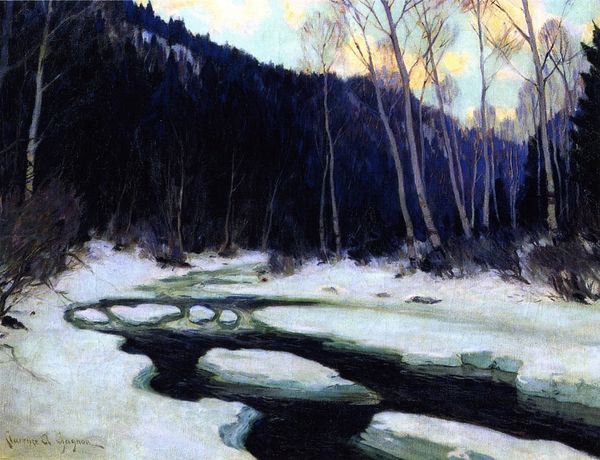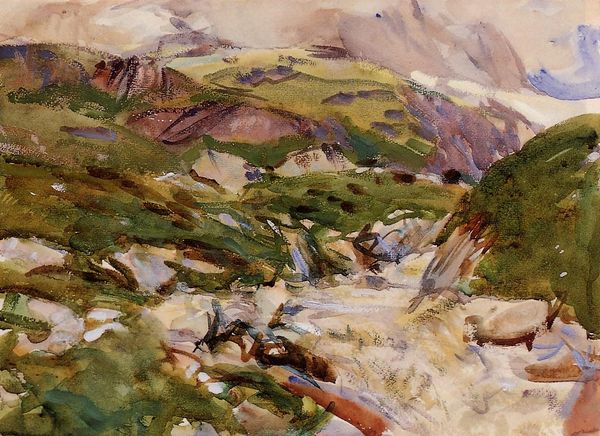
Copyright: Public domain
Editor: Frank Benson’s “St. Marguerite River,” created in 1922, employs watercolor to depict a serene waterscape. It evokes a sense of quiet observation. What stands out to me is how simply he’s captured such a vast natural scene, just a few strokes yet so evocative. What do you see in this piece? Curator: This watercolor, while seemingly a straightforward landscape, really reflects the changing perception of nature within American society in the early 20th century. It invites us to think about the accessibility of leisure and landscape, how images of nature become part of the popular imagination through mass media. Notice how the scene offers a sort of idealized vista, accessible and inviting? It reflects the growing middle class’s engagement with the outdoors, encouraged through advertising and promotion of tourism. Do you notice a lack of human presence? Editor: Yes, there are no people, which contributes to the peacefulness. The absence does make it seem more like a stage or set. Curator: Exactly. This lack contributes to a specific understanding of nature—pristine, untouched, existing primarily for observation. Watercolors, like this one, became readily reproducible through printmaking at the time and therefore accessible to people. Consider the impact this has on how nature is then perceived. Not a place of labor but recreation. What does this suggest to you? Editor: I see your point. It's not just a river scene; it's about constructing a particular idea of the wilderness as something separate from everyday life and available for leisure. Curator: Precisely! We are far away from paintings portraying labor! And the landscape itself functions as a commodity, in a way, accessible through imagery. Editor: That’s a very helpful perspective. It pushes me to look beyond the surface beauty of the watercolor. Curator: It helps us look at art not as an individual act of genius, but deeply embedded in cultural shifts and the democratization of images. A great starting point to dig further into landscape art.
Comments
No comments
Be the first to comment and join the conversation on the ultimate creative platform.
